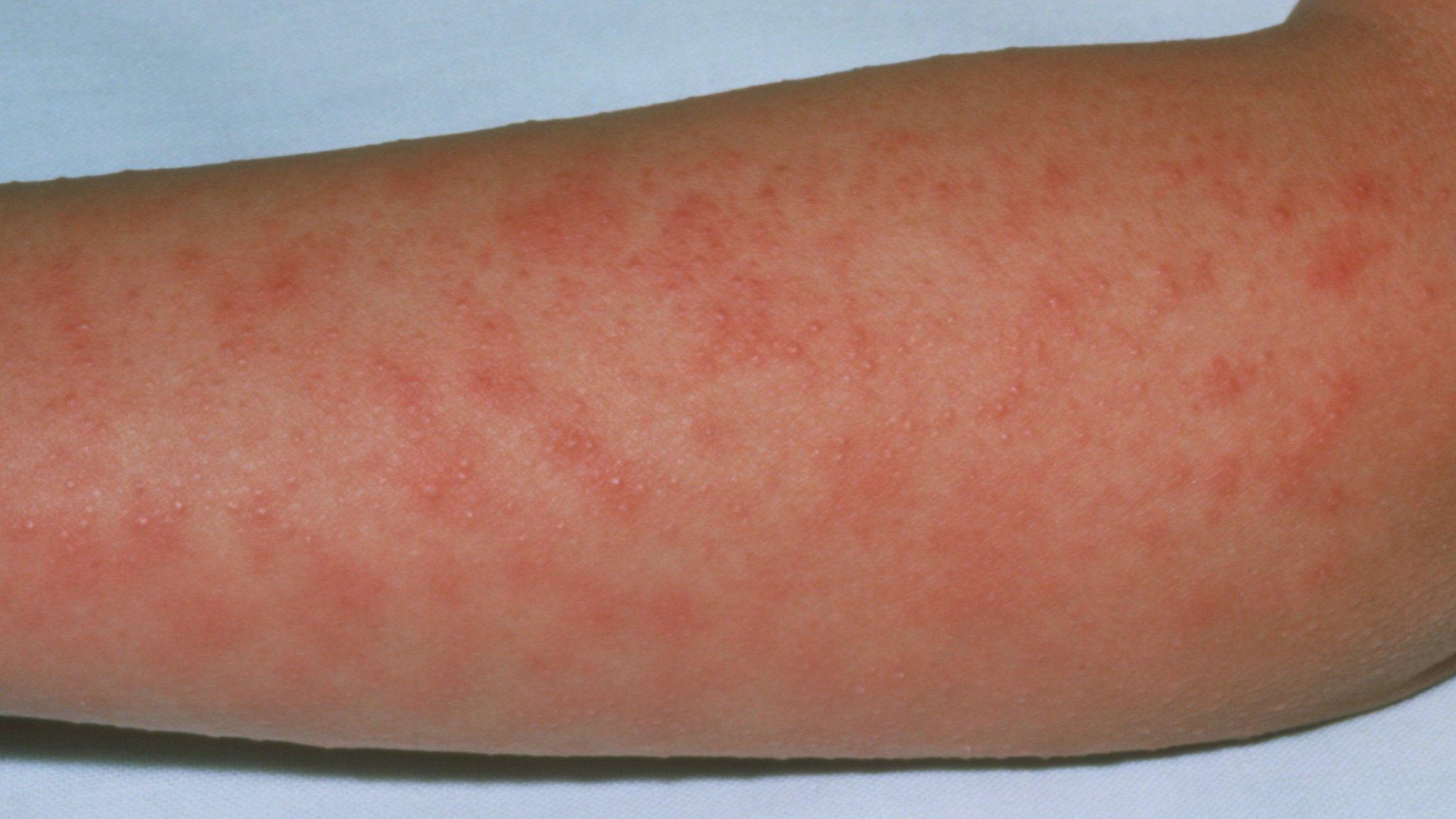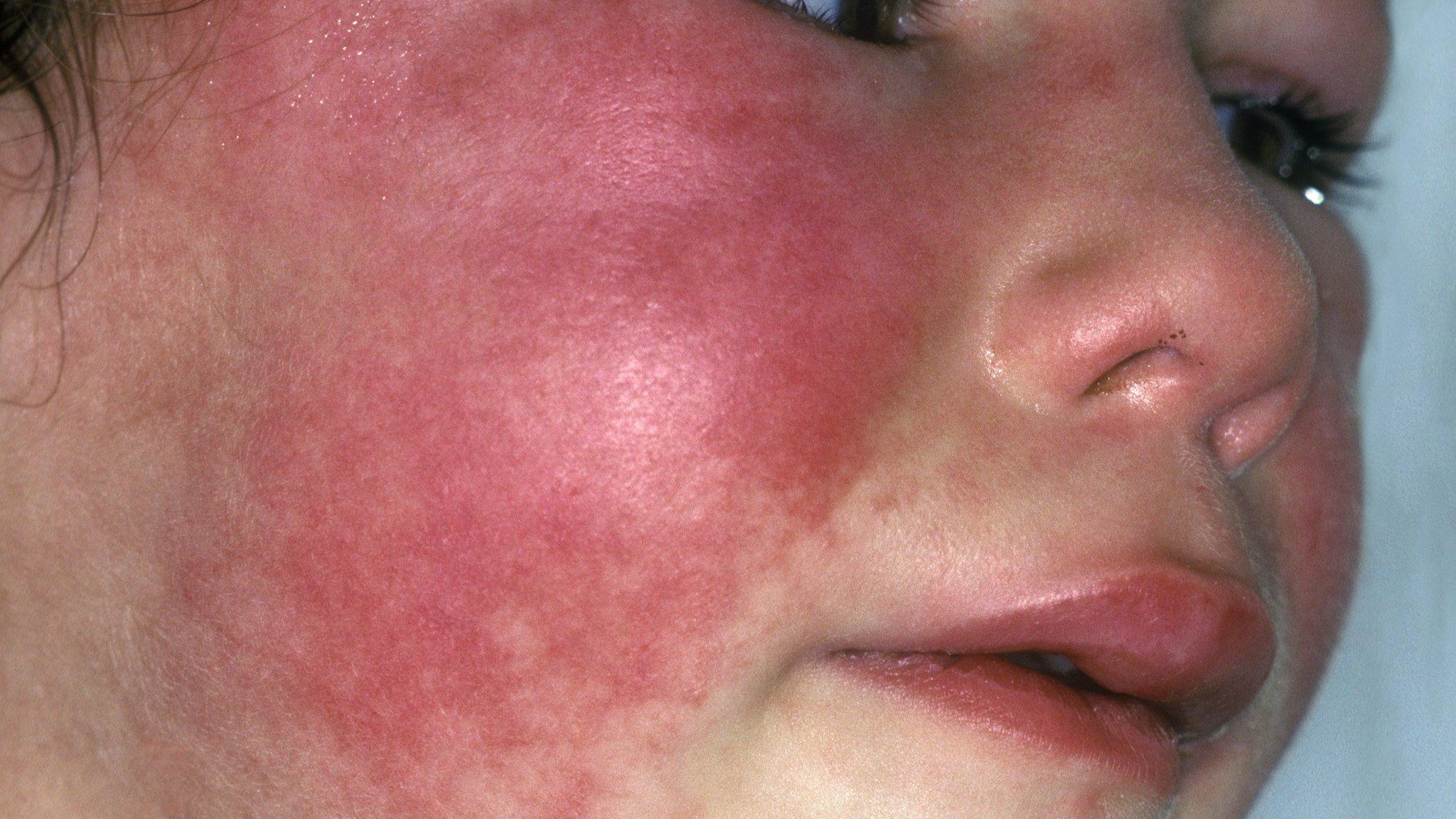Scarlet fever cases soar in England
- Published

The characteristic rash from scarlet fever is noticeable on a child's face
Cases of scarlet fever have soared this season, Public Health England says.
A total of 5,746 new cases were reported between September and March, roughly double the 2,833 cases reported in the same period last season.
PHE said it was the second period in a row "with exceptionally high numbers".
Scarlet fever commonly affects young children. Parents should look out for signs of a sore throat, headache, fever and pinkish rash on the chest.
The rash, which appears within a day or two, can spread to other parts of the body.
Although scarlet fever is now a much less serious infection than it used to be, complications can still arise, particularly in those who are not treated promptly.
At present, there is no vaccine for scarlet fever.
Public Health England said this is the time of year when the highest number of scarlet fever cases are normally seen and they are likely to tail off after a few weeks.
But it said it was unclear why substantial increases in cases had occurred in the past two years.
Dr Theresa Lamagni, head of streptococcal infection surveillance at Public Health England, said parents should keep an eye out for signs of scarlet fever.
"Individuals who think they or their child may have scarlet fever should see their GP without delay as antibiotic treatment is needed.
"Symptoms usually clear up after a week and in the majority of cases remain reasonably mild providing a course of antibiotics is completed to reduce the risk of complications.
"As scarlet fever is highly contagious, children or adults diagnosed with scarlet fever are advised to stay at home until at least 24 hours after the start of antibiotic treatment to avoid passing on the infection."
GPs, schools and nurseries are being urged to inform local health protection teams if they become aware of cases.
PHE also said that good hand hygiene routines for pupils and staff were very important.
"Children and adults should be encouraged to cover their mouth and nose with a tissue when they cough and sneeze and to wash their hands after using or disposing of tissues."
- Published10 March 2014

- Published8 April 2014
